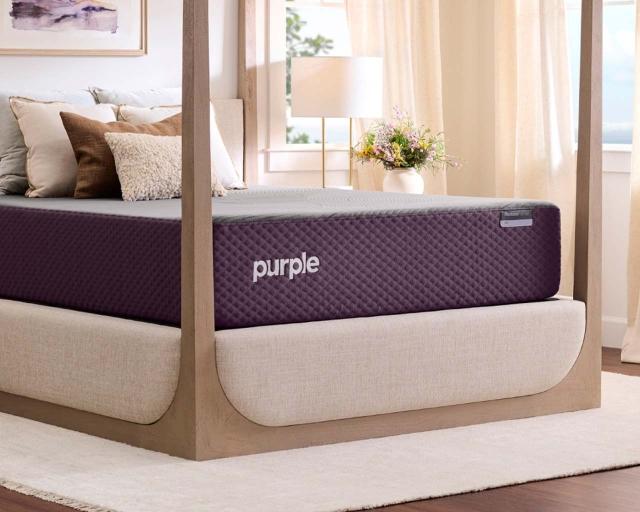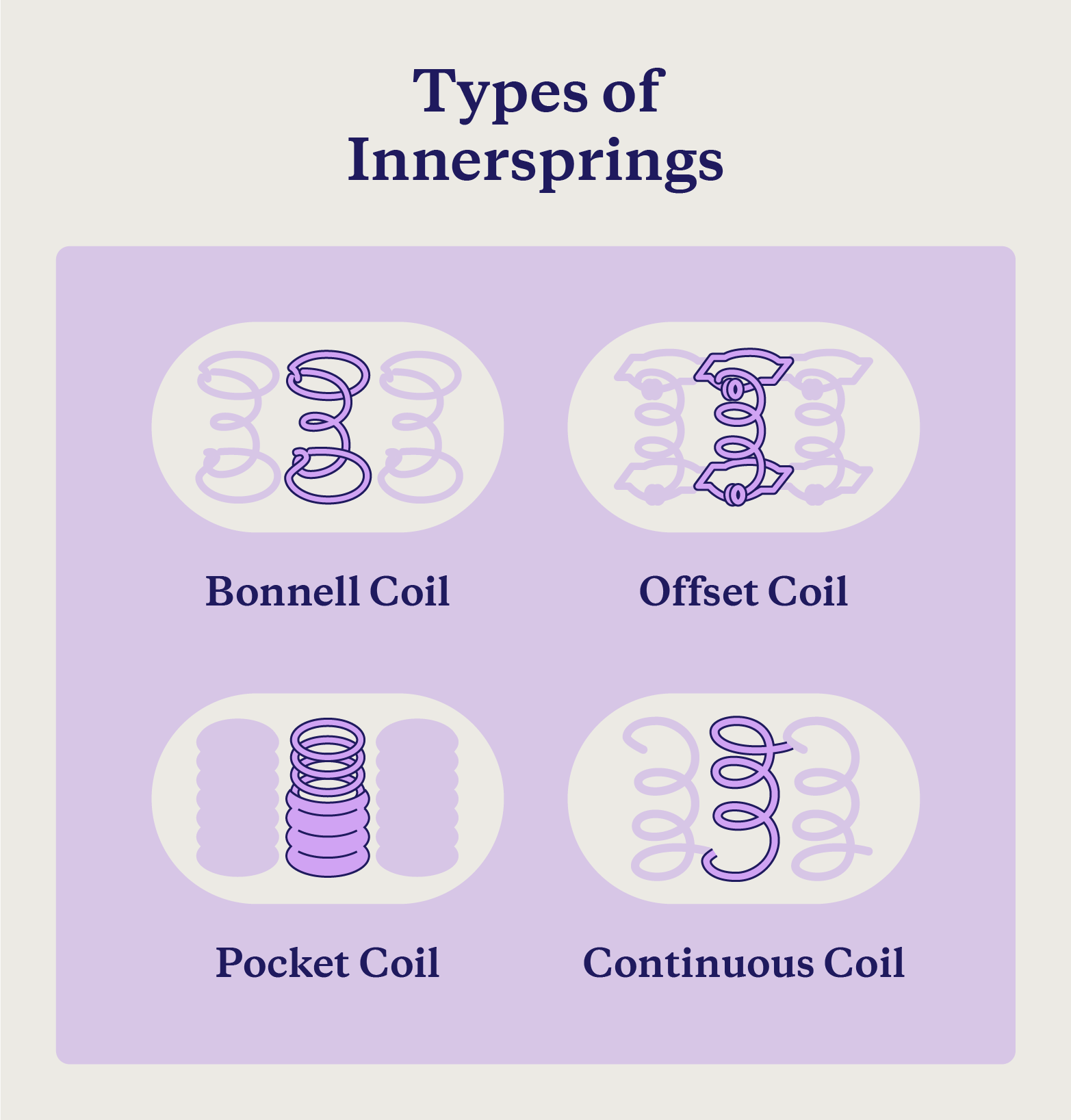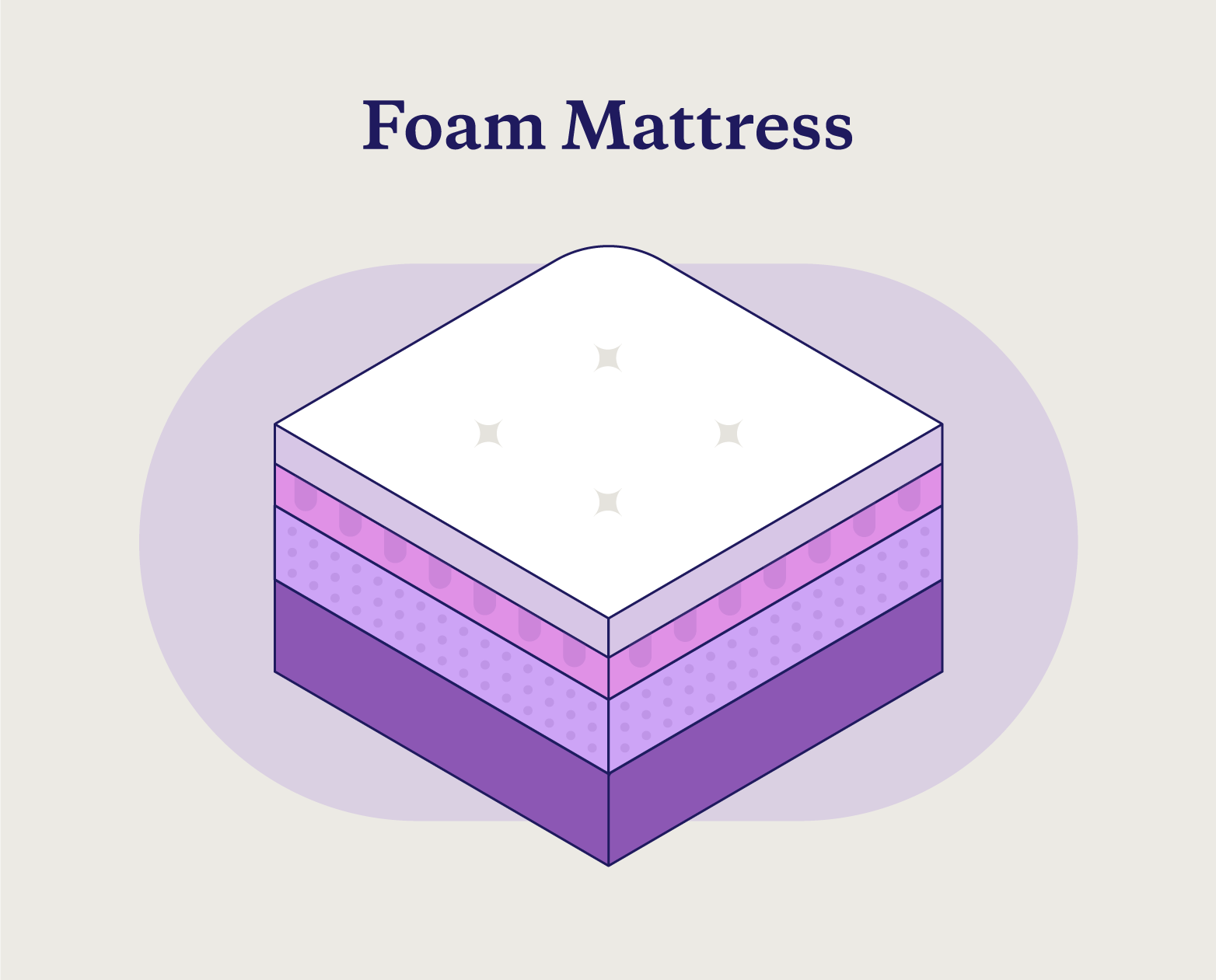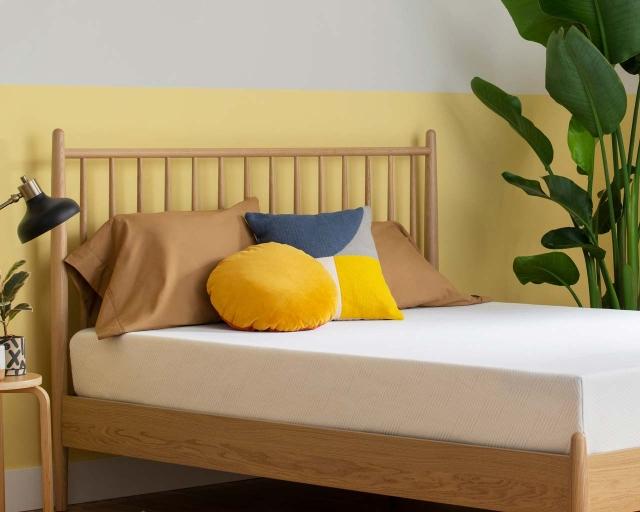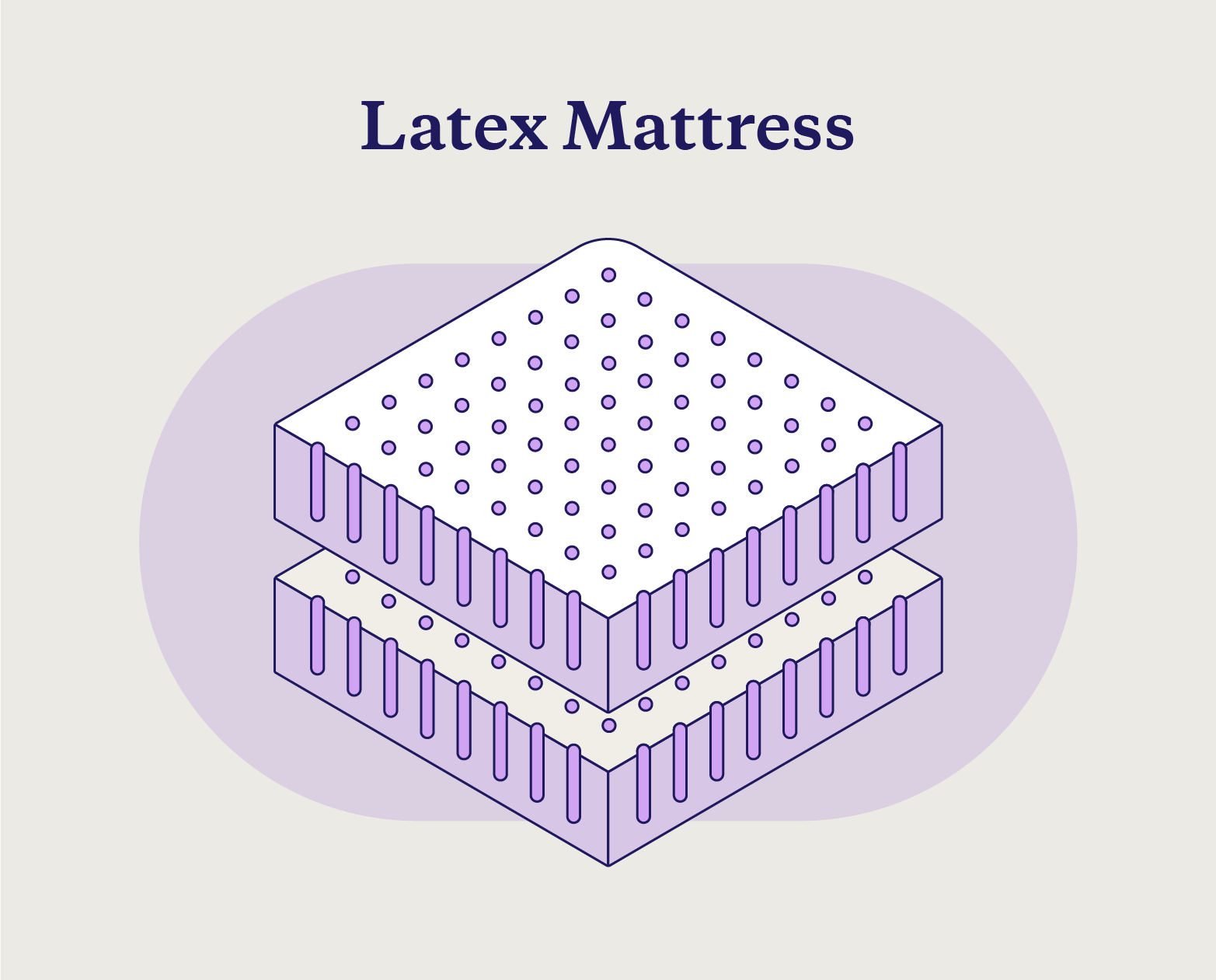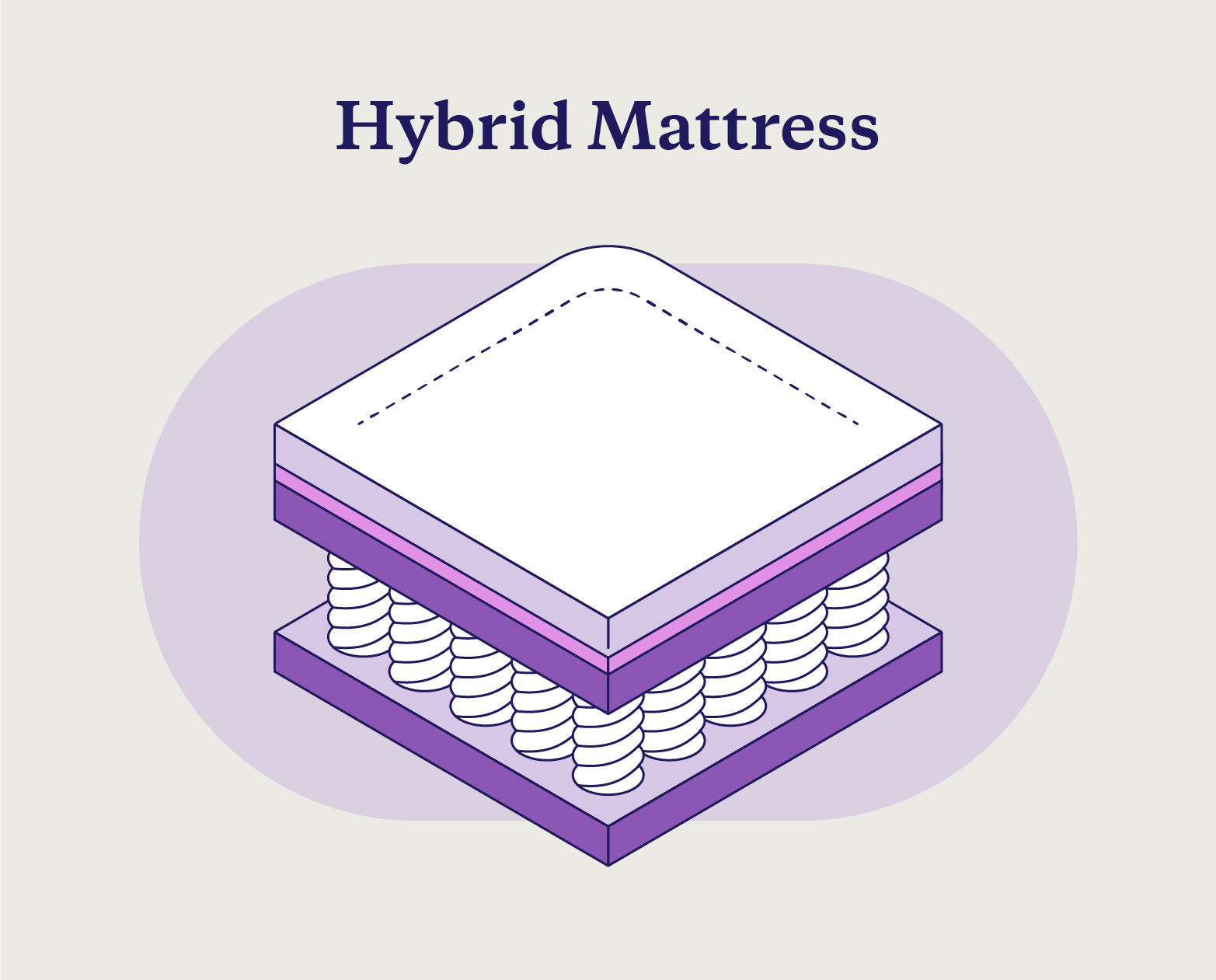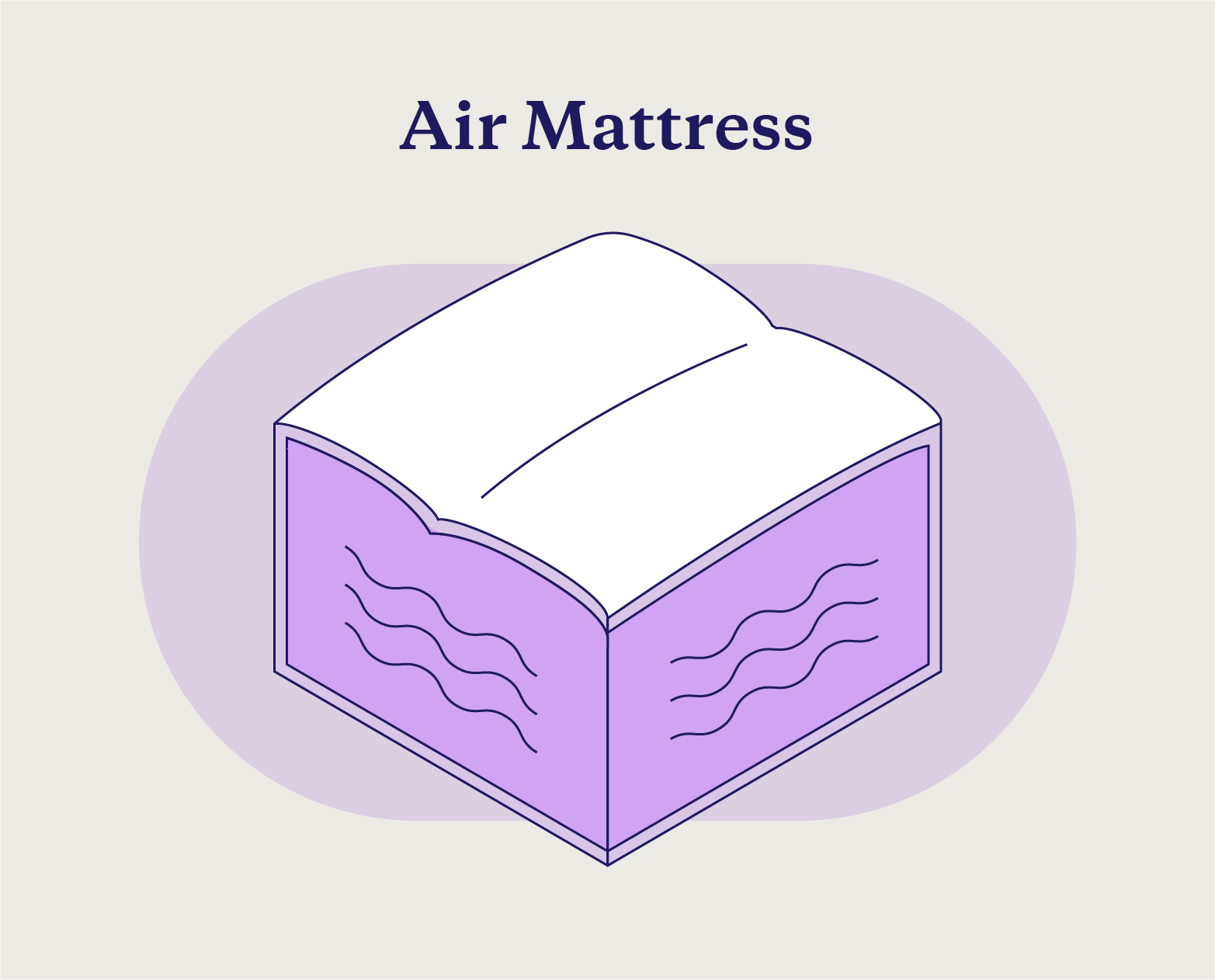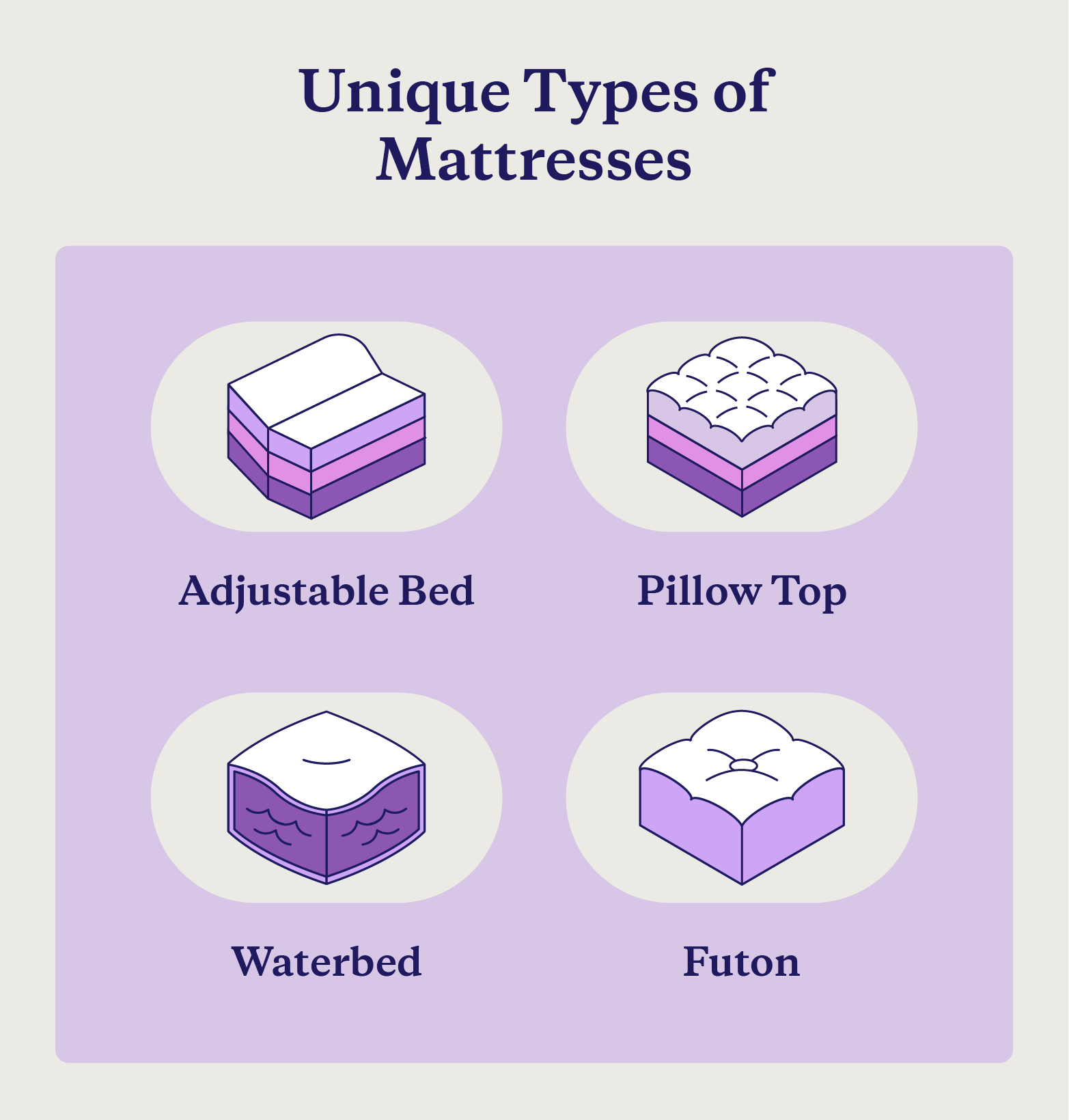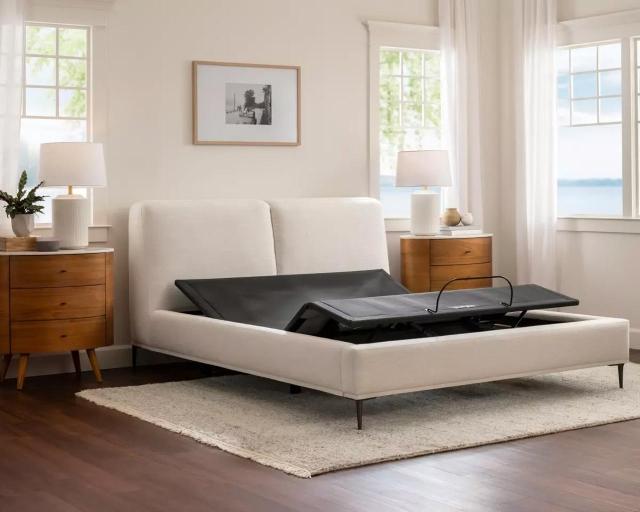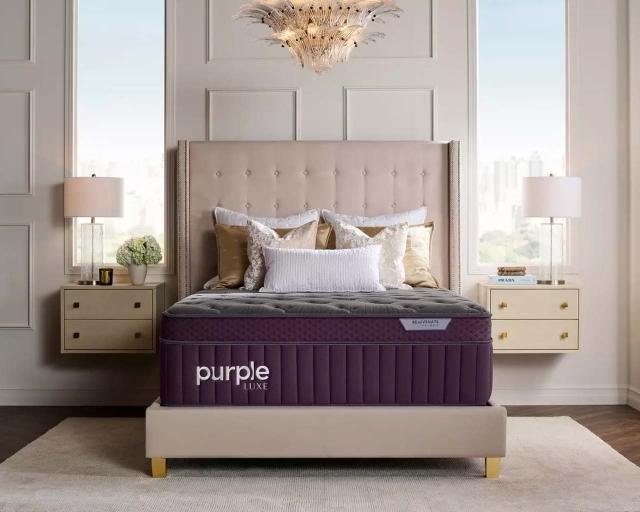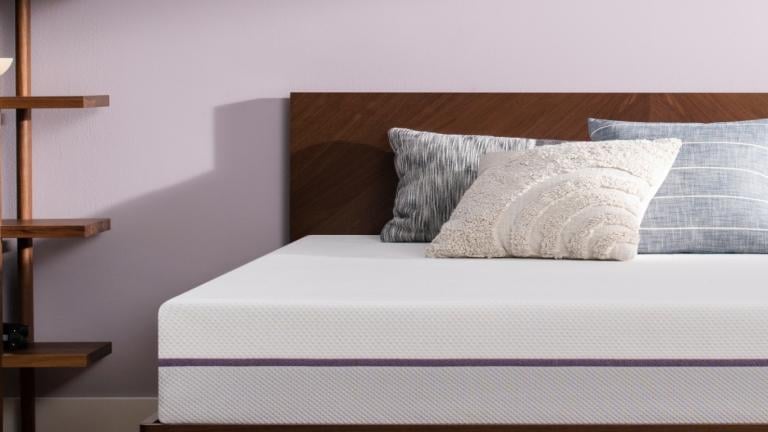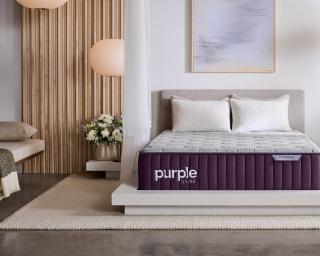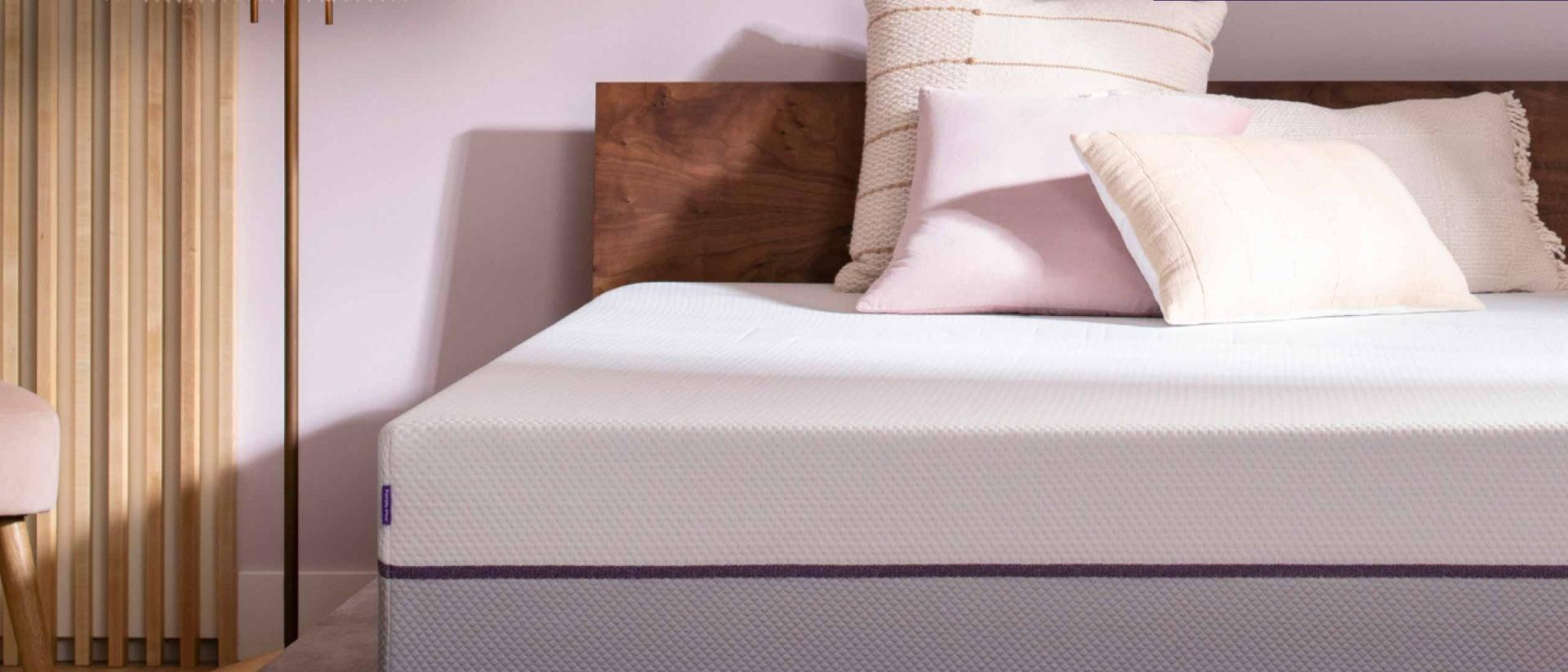
The 5 Types of Mattresses: A Comprehensive Guide for 2024
The most common types of mattresses are innerspring, foam, latex, hybrid, and air mattresses. Each mattress type has unique benefits and considerations to keep in mind when investing in your sleep health.
Shopping for a mattress without doing prior research is similar to grocery shopping without a list — it can cause confusion, take extra time, and lead to poor decision-making. Not every mattress is created equally, and the different types of mattresses, sizes, materials, manufacturers, and brands can make choosing the right mattress an overwhelming decision.
To simplify your mattress shopping experience, consider your sleeping wants and needs, your budget, each product’s durability, and the type of sleeper you are. Read along to learn more about the benefits and considerations of each mattress type so you can confidently choose the best product for your needs.
1. Innerspring
Innerspring mattresses are the most well-known mattress type. These mattresses use steel coils covered by a softer protective material like wool or cotton to support a sleeper’s body weight. Ranging in price from $100 to $1,500, innerspring mattresses are typically cheaper than other options, which makes them an affordable option for all types of sleepers.
Despite their popularity, innerspring mattresses are firmer and less durable than other products. These mattress types should last around 10 years, but additional weight, pressure (like jumping), and unnecessary stress can cause them to break down sooner. Before purchasing an innerspring mattress, consider how often and where you plan to use it.
|
Benefits |
Considerations |
|
|
Bonnell coil |
Affordable Even support |
Less durable Uncomfortably hits pressure points |
|
Continuous coil |
Affordable Flippable and durable |
Limited contouring Little motion isolation |
|
Offset coil |
Supportive Soft |
More costly than other innerspring mattresses |
|
Pocket coil |
Highly supportive Increased motion isolation |
More costly than other innerspring mattresses |
Types of Innerspring Mattresses
All types of innerspring mattresses use some form of steel coil to support a person’s body weight during rest. To increase comfort, these springs are covered by soft materials like wool, cotton, foam, and latex. While their lifespan is shorter, many people value the supportive nature of an innerspring mattress.
There are four types of innerspring mattresses, each identifiable by its coil configuration:
- Bonnell coil: Considered one of the oldest and most common types of mattresses, Bonnell coil mattresses are composed of evenly distributed open coils shaped like an hourglass that connect using wire extensions.
- Continuous coil: Continuous coil mattresses use a single wire wound into loose, S-shaped coils to make an entire support framework.
- Offset coil: Offset coil mattresses use hourglass-shaped coils with flattened convolutions to create softer, better-conforming frameworks.
- Pocket coil: Wrapped or Marshall coil mattresses are made of fabric-wrapped coils, which absorb pressure and minimize spring disruption.
Recommended for:
- Bonnell coil mattresses are great for infrequently used sleeping spaces like guest rooms and short-term housing.
- Continuous coil mattresses are best for sleepers requiring extra support.
- Pocket coil mattresses are great for sleeping partners and sleepers who move throughout the night.
2. Foam
Instead of springs, foam mattresses use aerated materials to create a soft, supportive base for sleepers. Unlike spring mattresses, foam mattresses are designed to conform to a person’s body, creating a “sinking” feeling that increases motion isolation.
The differences between spring and foam mattresses include pricing, joint support, pressure relief, and other features unique to each mattress type. While low-end foam mattresses can cost below $200, higher-end mattresses with better support and additional features, like gel-infused foam, can cost as much as $5,000.
|
Benefits |
Considerations |
|
|
Memory foam |
Soft but supportive Absorb and reduce motion |
Can retain body heat Contouring can be uncomfortable |
|
Polyfoam |
More affordable than other foam options Avoids the “sinking” feel of other foams |
Less durable High-resilience options are more costly |
|
Gel-infused foam |
Soft and supportive Motion isolation Supports temperature regulation |
Can be costly compared to other foam mattresses |
Types of Foam Mattresses
Foam mattresses grew in popularity after the invention of memory foam by the National Aeronautics and Space Administration (NASA) in the 1970s. They are highly durable, and a few of the most popular types of foam mattresses are:
- Memory foam: Memory foam mattresses are made of viscoelastic, a material that contours to an individual’s body and helps distribute weight equally.
- Polyfoam: Polyfoam mattresses are made of polyurethane foam, which is a lightweight, soft material often used as a comfort layer in spring mattresses.
- Gel-infused: Gel-infused foam mattresses are made of memory foam and a cooling gel designed to regulate temperature for hot sleepers.
Recommended for:
- Memory foam mattresses are best for restless sleepers.
- Polyfoam mattresses are great for sleepers looking for an affordable, soft mattress.
- Gel-infused foam mattresses work best in warm climates and for hot sleepers.
3. Latex
Covering the middle ground between innerspring and foam, latex mattresses are a springy yet contouring mattress option for sleepers. While generally more costly, they are breathable, supportive, and great for temperature regulation. The similarities between latex and memory foam mattresses make them an excellent option for sleepers looking for a soft, environmentally friendly mattress.
The lifespan of a latex mattress depends on its construction and materials, but a well-made product should last close to 20 years. As one of the most durable mattress types on the market, latex mattresses are ideal for sleepers looking for a long-term, eco-friendly sleep investment.
|
Benefits |
Considerations |
|
|
Organic |
GOLS-certified product Breathable Supports temperature regulation |
Can affect those with a latex allergy Can be costly compared to other mattress types |
|
Natural |
Made from natural materials Environmentally friendly Fewer additives Breathable |
Can affect those with a latex allergy Can be costly compared to other mattress types |
|
Synthetic |
Breathable Supports temperature regulation |
Can affect those with a latex allergy Uses potentially harmful materials Can be costly compared to other mattress types |
Types of Latex Mattresses
Even though they use minimal additives and are nontoxic, sleepers with a latex allergy should not use latex mattresses. The materials used to create these mattresses can be separated into three categories:
- Natural: Latex mattresses made from natural products use sap from rubber trees to create a frothy, foamy material.
- Organic: Organic latex mattresses are GOLS-certified products, meaning the mattress’s materials are gathered without the use of pesticides.
- Synthetic: Synthetic latex mattresses are made of two petroleum-based compounds that combine to create styrene-butadiene rubber, which is potentially harmful.
Recommended for:
- All latex mattresses are best for sleepers with sufficient budgets looking for a durable and supportive product.
- Natural latex mattresses are great for sleepers searching for a mattress made with minimal additives.
- Organic latex mattresses are excellent options for health-conscious sleepers.
4. Hybrid Mattress Types
Made from a combination of springs, foam, or latex, hybrid mattresses blend traditional support with contemporary features to create a responsive, supportive product. These hybrid models are incredibly versatile and can support various body types, sleeping positions, and temperature needs.
Even with a base composed of metal coils, hybrid mattresses offer pressure point relief, motion isolation, and a comfortable top layer. Purple’s hybrid mattresses also provide additional hybrid-specific features like End-to-End Coils, an Advanced Edge Support System, and Ultra Comfort Foam for breathability. These combined features help sleepers get better rest and wake up rejuvenated.
Recommended for:
- Hybrid mattresses are great for sleeping partners with different support needs.
- Hybrid mattresses work best for sleepers looking for a highly durable product.
|
Benefits |
Considerations |
|
|
Memory foam hybrid |
Joint and back support Pressure point relief Durability |
Heat retention Body contouring and “sinking” feeling Less motion isolation than foam mattresses |
|
Polyfoam hybrid |
Joint and back support Pressure point relief Durability |
May retain heat Body contouring and “sinking” feeling Less motion isolation than foam mattresses |
|
Gel-infused hybrid |
Joint and back support Pressure point relief Phase-change materials for increased cooling properties Durability |
Body contouring and “sinking” feeling Gel technology can be costly Less motion isolation than foam mattresses |
Purple Hybrid Mattresses
For individual and partnered sleepers alike, Purple offers a variety of hybrid mattresses that feature our proprietary sleep innovation, the GelFlex® Grid. With instant adaptivity, temperature regulation, and responsive support, our patented layer puts our hybrid mattresses a step above the rest.
Pocketed coils and a polyfoam framework make our base hybrid mattress model, the Purple Restore™ Hybrid Mattress, ideal for sleepers who want a hybrid product with increased firmness, instant response support, and temperature regulation.
Premier products, including the Purple RestorePremier™ Hybrid Mattress and the Purple RestorePlus™ Hybrid Mattress, utilize enhanced technologies to offer sleepers a soft but supportive feel, all the while the GelFlex® Grid cradles the body and increases airflow for everyday comfort.
5. Air Mattresses
Sometimes referred to as airbeds, air mattresses are inflatable mattresses. This type of mattress is lightweight and typically portable, and they are available in a variety of sizes and thicknesses. While they can be inflated manually, air compressors and pumps can inflate these products within minutes.
Air mattresses work well for temporary sleeping and resting needs. You can quickly adjust the mattress’s firmness by adding or removing air, and it can be stored away in small spaces when not in use.
Recommended for:
- Air mattresses are best for temporary sleeping arrangements.
- Air mattresses are great for traveling, camping, and short overnight trips.
|
Benefits |
Considerations |
|
|
Air mattress |
Inexpensive Convenient to source and store Easy to set up |
May leak or decompress Not very durable Provides little comfort to some sleepers |
Alternative Mattress Types
There are mattresses that don’t fit into the five classic categories. These sleep products are typically classified as alternative mattresses, as they have features and characteristics that set them apart from innerspring, foam, latex, hybrid, and air mattresses. While unconventional, these alternative mattress types are commonly used by a variety of sleepers.
Recommended for:
- Adjustable mattresses are excellent for sleepers with sciatica or back pain.
- Pillow top mattresses are great for taller sleepers.
- Waterbeds work well for sleepers who want a unique sleep environment.
- Futons are best for small sleeping spaces or individuals who need extra sleeping accommodations.
|
Benefits |
Considerations |
|
|
Adjustable |
Versatile positions for sleeping and resting Dual adjustments for sleeping partners Great for different types of pain relief |
High upfront cost Ongoing electrical and maintenance costs |
|
Pillow top |
Increased comfort and softness Improved mattress thickness Supportive structure |
Larger than standard size More costly than typical mattresses |
|
Waterbed |
Soft and supportive Temperature control |
May be too soft for some sleepers Heavy and difficult to move |
|
Futon |
Versatile and adaptable Smaller than standard mattresses Affordable |
Less comfortable than standard mattresses Decreased durability |
Adjustable Beds
An adjustable bed is as simple as the name suggests; it’s a product that can be repositioned for increased comfort. This type of sleep product can be equipped with other features like preset positions and massage settings for a unique resting experience.
Softer, flexible mattresses work best for adjustable beds. These mattresses can be repositioned more easily than firmer mattresses without much give. Purchasing an adjustable bed frame and mattress from the same manufacturer can ensure product compatibility, which improves sleep quality and comfort.
Pillow Top Mattress
Pillow top mattresses are standard mattresses with an additional padded attachment on top of the mattress cover. These mattresses provide additional pressure relief and comfort to standard mattresses and are often compared to Euro top mattresses.
Pillow top mattresses are an affordable option for sleepers looking for optimal comfort that still prioritize body alignment, weight distribution, and pain relief. With top-of-the-line options like the Purple RejuvenatePremier™ Mattress — designed with a quilted Euro top for increased comfort and pressure relief — pillow tops are an excellent product for restorative sleep.
Waterbed
A waterbed is a mattress that uses water instead of springs, foam, or latex as support. Some waterbeds use tubes or bladders to distribute the filling and create a highly supportive contouring base. Ranging from $50 to $2,000, this type of mattress rose to fame in the 1980s, but unique features like temperature control keep this alternative mattress a popular option for some sleepers.
Futon
A futon is a flexible, mobile mattress that is usually attached to a movable frame. This product can be used as both a couch and a bed, which makes it a versatile piece of furniture for small living spaces. Similar to standard mattresses, futons are available in various sizes, thicknesses, shapes, colors, and materials, as are the frames they sit on. Many sleepers also cover futons with a duvet or other covering to protect the mattress from everyday wear and tear.
Which Mattress Type Is Best for You?
Choosing a mattress is an important decision. To determine which mattress type is best for you, prioritize the features and considerations you need for restful, restorative sleep, including:
- Budget: High-quality and highly durable mattresses will cost more than conventional options.
- Sleeping position: How you sleep impacts the mattress you invest in. Stomach, side, and back sleepers need different levels of support to get their best sleep.
- Mattress size: Your height, sleeping space, and current bed frame all influence the size of your mattress, which can affect the type of mattress you purchase.
- Foundation: Whether you choose to keep or replace your bed’s foundation will impact which mattress you need for comfortable, versatile sleep.
- Preferences: Mattress thickness, firmness or softness, motion isolation, support needs, and pressure relief preferences are all factors to consider during the mattress selection process.
After you’ve narrowed down the features essential to your sleep habits, consider testing a mattress in store. This firsthand experience can help you make an informed decision before committing to a long-term sleep product.
With hybrid constructions, luxurious comfort layers, and essential pressure relief options, Purple mattresses are a great choice for all types of sleepers — no matter your preferences, needs, or budget.
FAQ
The best mattress for you depends on your preferences. Purple mattresses have created over 12.7 million happy sleepers of every sleep position and garnered over 114,000 5-star reviews. With an adaptive design, hybrid construction options, and enhanced comfort layers, mattresses by Purple support high-quality sleep and are trusted by sleepers of all types.
There are five main types of mattresses: innerspring, foam, latex, hybrid, and air mattresses. Each type of mattress uses unique materials and structures to create foundations designed to promote different sleeping experiences.
Most mattresses are made of springs, foam, or a combination of both. A mattress’s comfort layers can be made of various materials, like memory foam, latex, cooling gel, cotton, wool, and silk. The comfort layer in Purple mattresses is made of our proprietary GelFlex® Grid, a hyper-elastic polymer that provides the perfect combination of softness and support lacking in many primary mattress categories.
Pocket spring mattresses are among the most durable mattress types, in addition to latex mattresses. These materials are designed to support sleepers night after night, even in the face of regular wear and tear. A mattress’s durability largely depends on the quality of the materials, so foam, cotton, wool, or mattresses using other materials may also be durable depending on their quality.
Organic and natural latex mattresses are considered some of the healthiest types of mattresses because they are naturally hypoallergenic. These types of mattresses are also resistant to dust and mold spores, provide spinal and full-body support, and are eco-friendly in comparison to other options.
More to Explore
Level-up your sleep routine with our most-loved products.


